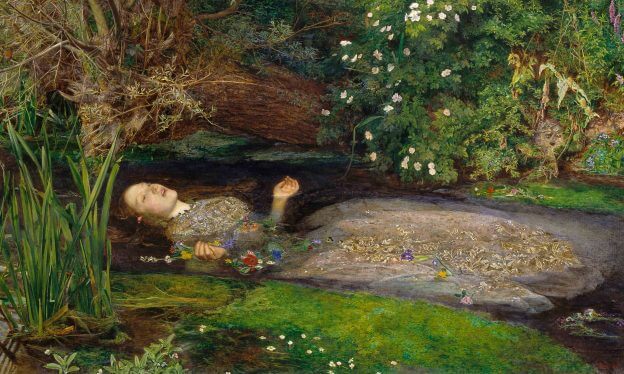The Victorian era, spanning from 1837 to 1901 during Queen Victoria’s reign, was a period of immense cultural, social, and artistic transformation. This epoch witnessed significant developments in art, reflecting the complexities of a rapidly changing society. This article explores the key characteristics, influential artists, and major movements of Victorian art, offering a detailed understanding of this fascinating period.
Introduction to Victorian Art
Victorian art is marked by its diversity, encompassing various styles and movements that emerged in response to the era’s social changes, technological advancements, and expanding empire. The art produced during this time reflects a blend of traditional values and the innovative spirit of the age, making it a rich field of study for historians and art enthusiasts alike.
Key Characteristics of Victorian Art
Realism and Romanticism
At the beginning of the Victorian era, art was heavily influenced by Romanticism, characterized by its emphasis on emotion, nature, and individualism. Artists like J.M.W. Turner and John Constable created landscapes that captured the sublime beauty of the natural world. However, as the century progressed, there was a shift towards Realism, which focused on depicting everyday life with accuracy and attention to detail. This movement aimed to present a more truthful representation of society, as seen in the works of artists like Ford Madox Brown and William Powell Frith.
The Influence of the Industrial Revolution
The Industrial Revolution profoundly impacted Victorian art, both in terms of subject matter and the materials used. The rapid urbanization and technological advancements of the era provided new themes for artists to explore, such as the contrast between rural and urban life. Additionally, the availability of new pigments and printing techniques revolutionized the art world, allowing for greater experimentation and dissemination of artworks.
The Pre-Raphaelite Brotherhood
One of the most significant movements of the Victorian era was the Pre-Raphaelite Brotherhood, founded in 1848 by Dante Gabriel Rossetti, John Everett Millais, and William Holman Hunt. This group sought to return to the detailed, vibrant style of art that existed before the High Renaissance, rejecting the academic standards of their time. Their work often featured medieval themes, vivid colors, and intricate details, aiming to convey a sense of moral and aesthetic purity.
Influential Artists of the Victorian Era
J.M.W. Turner (1775-1851)
Joseph Mallord William Turner is renowned for his innovative approach to landscape painting. His works, characterized by dramatic light effects and bold brushstrokes, often depicted the power and beauty of nature. Turner’s later works, such as “Rain, Steam, and Speed” (1844), reflect the transformative impact of the Industrial Revolution on the landscape.
John Everett Millais (1829-1896)
A founding member of the Pre-Raphaelite Brotherhood, Millais is best known for his highly detailed and emotionally charged paintings. His work “Ophelia” (1851-1852) remains one of the most iconic images of Victorian art, capturing the tragic beauty of Shakespeare’s character with meticulous attention to natural details.
Frederic Leighton (1830-1896)
Lord Frederic Leighton was a leading figure in Victorian art, celebrated for his classical subjects and elegant compositions. His painting “Flaming June” (1895) exemplifies his mastery of form and color, showcasing a blend of classical and modern elements that defined much of Victorian art.
Major Movements in Victorian Art
The Arts and Crafts Movement
Emerging in the late 19th century, the Arts and Crafts Movement was a response to the industrialization of art and design. Led by figures like William Morris, this movement emphasized handcrafted quality and traditional craftsmanship. It sought to restore the connection between the artist and the creation process, advocating for the integration of beauty and utility in everyday objects.
Aestheticism
Aestheticism, which gained prominence in the latter half of the Victorian era, championed the idea of “art for art’s sake.” This movement, associated with artists like James McNeill Whistler and Oscar Wilde, focused on beauty and visual pleasure rather than moral or narrative content. The movement sought to elevate the aesthetic experience, often featuring intricate patterns, exotic themes, and a departure from realism.
Symbolism
Symbolism emerged as a reaction against the materialism and rationalism of the era, emphasizing the use of symbolic imagery to express deeper truths and emotions. Artists like Edward Burne-Jones and George Frederic Watts explored themes of mythology, dreams, and spirituality in their work, using allegory and symbolism to convey complex ideas.

Conclusion
Victorian art is a testament to the dynamic and multifaceted nature of the 19th century. It reflects a period of significant change, where traditional values were both challenged and upheld, and where the rapid pace of technological and social transformation left an indelible mark on the artistic landscape. From the detailed realism of the Pre-Raphaelites to the aesthetic purity of the Aesthetic Movement, Victorian art offers a rich tapestry of styles and themes that continue to captivate and inspire.






















